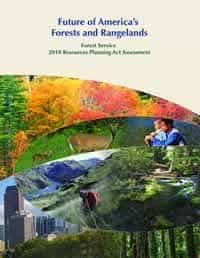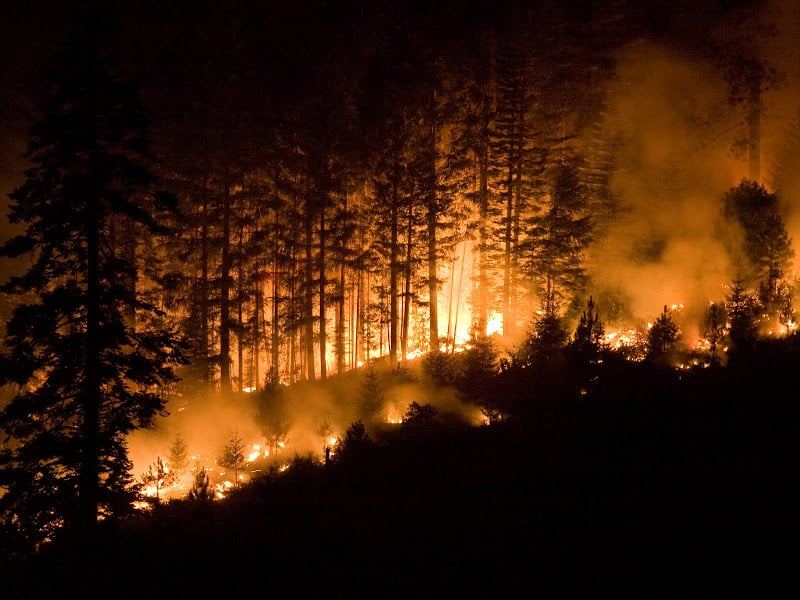Terry Seyden forwarded this link to an article in the Lake County (Calif) news regarding the publication of the RPA Assessment. Here is one in the Santa Barbara Independent.
The article said it was released Tuesday, I couldn’t find anything under USDA press releases, nor Forest Service, but I finally located it on the FS homepage here.
Here is a link to the report. Here is the link to RPA stuff in general.
A comprehensive U.S. Forest Service report released Tuesday examines the ways expanding populations, increased urbanization, and changing land-use patterns could profoundly impact natural resources, including water supplies, nationwide during the next 50 years.
Significantly, the study shows the potential for significant loss of privately-owned forests to development and fragmentation, which could substantially reduce benefits from forests that the public now enjoys including clean water, wildlife habitat, forest products and others.
“We should all be concerned by the projected decline in our nation’s forests and the corresponding loss of the many critical services they provide such as clean drinking water, wildlife habitat, carbon sequestration, wood products and outdoor recreation,” said Agriculture Under Secretary Harris Sherman.
Sherman said the report offers “a sobering perspective on what is at stake and the need to maintain our commitment to conserve these critical assets.”
U.S Forest Service scientists and partners at universities, non-profits and other agencies found urban and developed land areas in the U.S. will increase 41 percent by 2060.
Forested areas will be most impacted by this growth, with losses ranging from 16 to 34 million acres in the lower 48 states. The study also examines the effect of climate change on forests and the services forests provide.
Most importantly, over the long-term, climate change could have significant effects on water availability, making the US potentially more vulnerable to water shortages, especially in the Southwest and Great Plains.
Population growth in more arid regions will require more drinking water. Recent trends in agricultural irrigation and landscaping techniques also will boost water demands.
“Our nation’s forests and grasslands are facing significant challenges. This assessment strengthens our commitment to accelerate restoration efforts that will improve forest resiliency and conservation of vitally important natural resources,” said U.S. Forest Service Chief Tom Tidwell.
The assessment’s projections are influenced by a set of scenarios with varying assumptions about U.S. population and economic growth, global population and economic growth, global wood energy consumption and U.S. land use change from 2010 to 2060. Using those scenarios, the report forecasts the following key trends:
Forest areas will decline as a result of development, particularly in the South, where population is projected to grow the most;
Timber prices are expected to remain relatively flat;
Rangeland area is expected to continue its slow decline but rangeland productivity is stable with forage sufficient to meet expected livestock grazing demands;
Biodiversity may continue to erode because projected loss of forestland will impact the variety of forest species;
Recreation use is expected to trend upward.Additionally, the report stresses the need to develop forest and rangeland policies which are flexible enough to be effective under a wide range of future socioeconomic and ecological conditions such as climate change.
UPDATE
Thanks to an alert reader we now have links to 2010 RPA Assessment Frequently Asked Questions 17 Dec 2012
2010 RPA Assessment Talking Points 17 Dec 2012
Take a look and see what you think! Predicting the future is hard work..
My one thought is that the USG would save oodles of money by forcing the agencies (at least USGS, Bureau of Reclamation, and now FS) to do one coordinated effort on future water supply and demand. In fact, I think we could save mega-oodles by forcing coordination among agencies on every research topic. One way is just to assign a science agency a topic, and require that all funding for that work go through one agency (and people cooperating with them). There would be a panel which included practitioners reviewing proposals for utility, duplication and overlap. After all, how many different down-scaled climate model projections does one area need?






